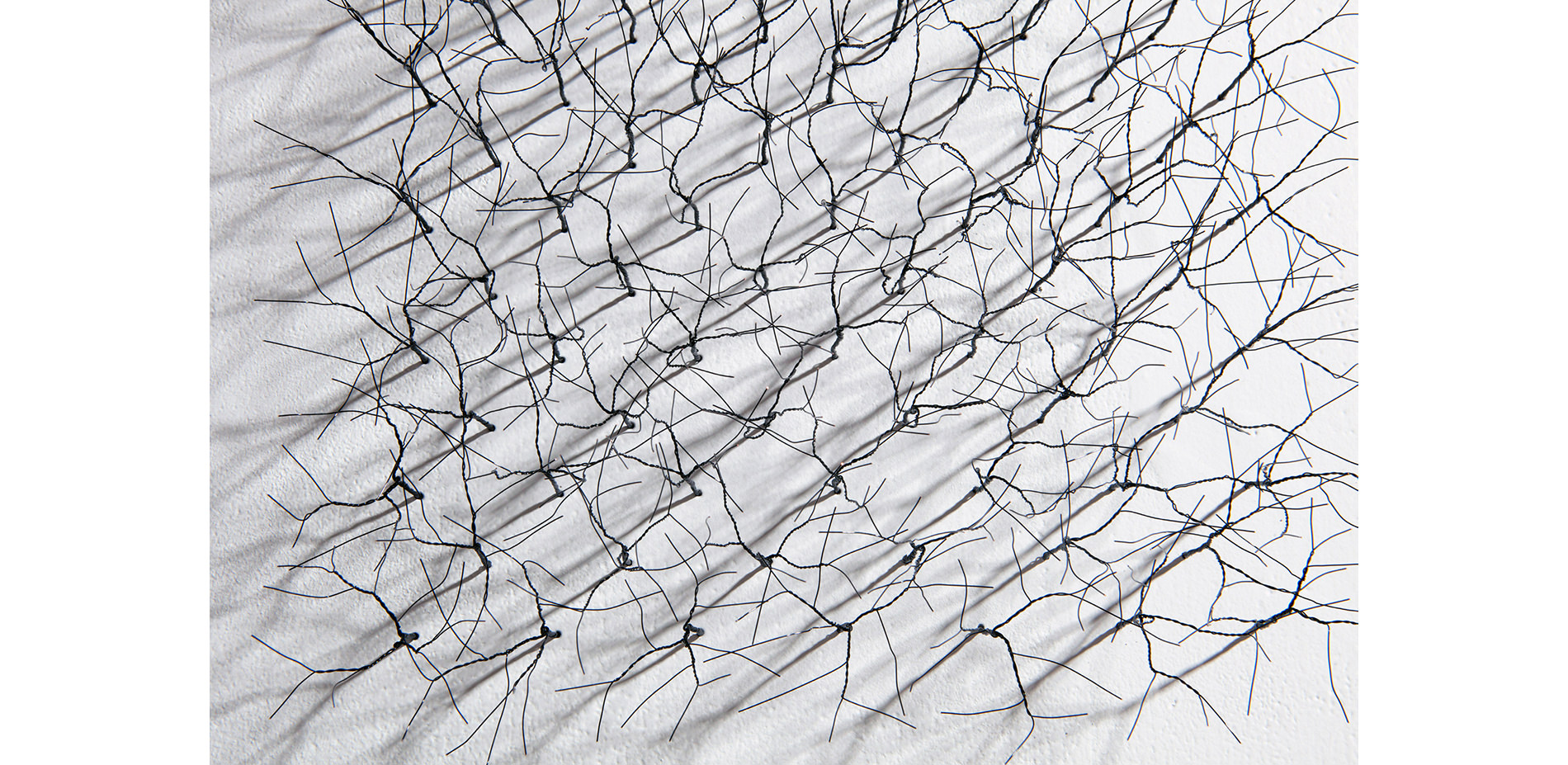
Aerial photograph typology model of a quincunx illustrating canopy cover and form.
Photo Credit: Cody Goddard
Media: Please submit high-resolution image requests to images@asla.org.
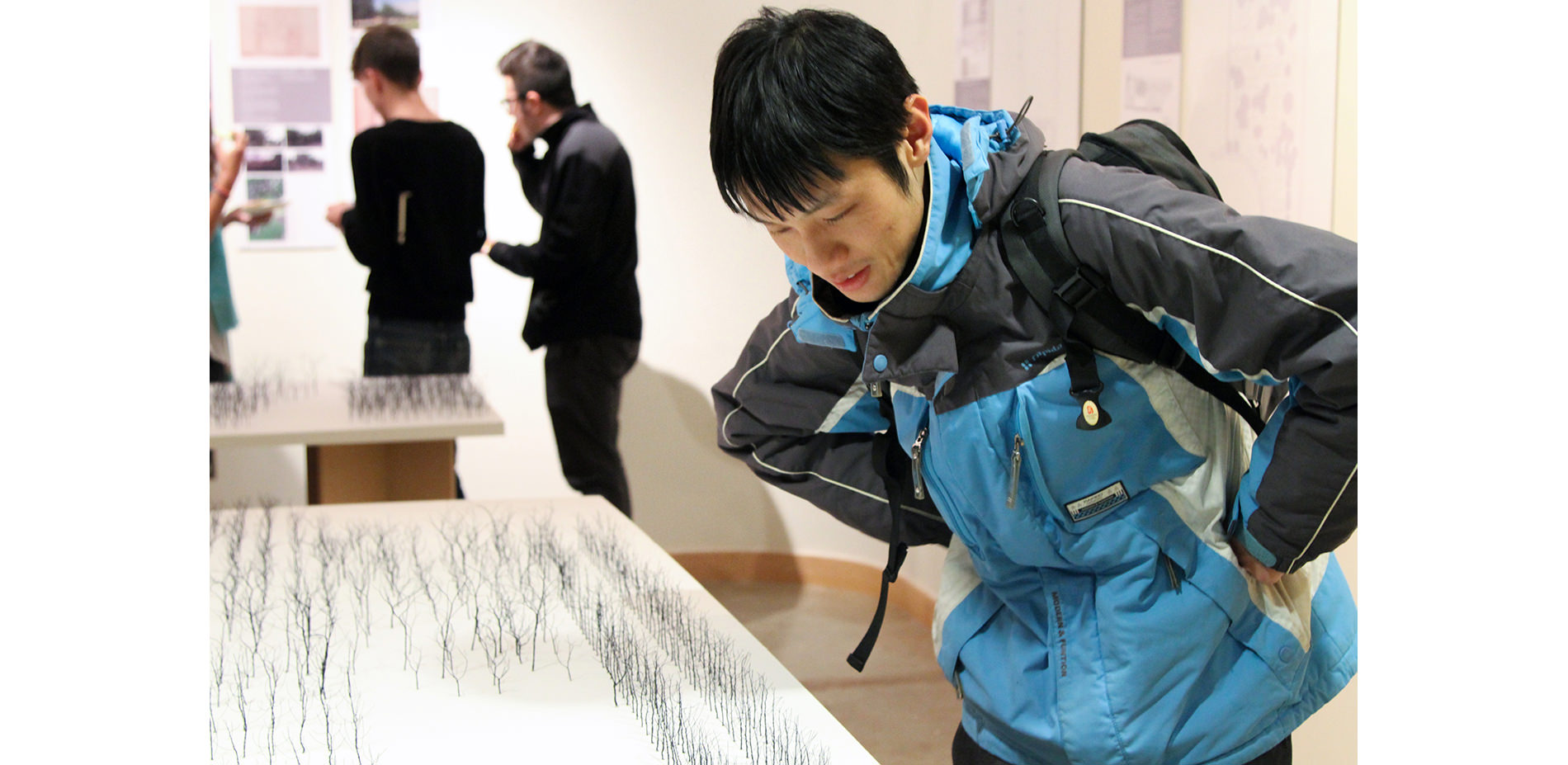
Visitors to the gallery exhibit viewing uniquely hand-twisted trees that reveal branching structure, height and canopy to scale out of wire and added to the 3’ x 8’ CNC models of Dan Kiley’s Miller Garden and the North Christian Church.
Photo Credit: Scott Tucker
Media: Please submit high-resolution image requests to images@asla.org.
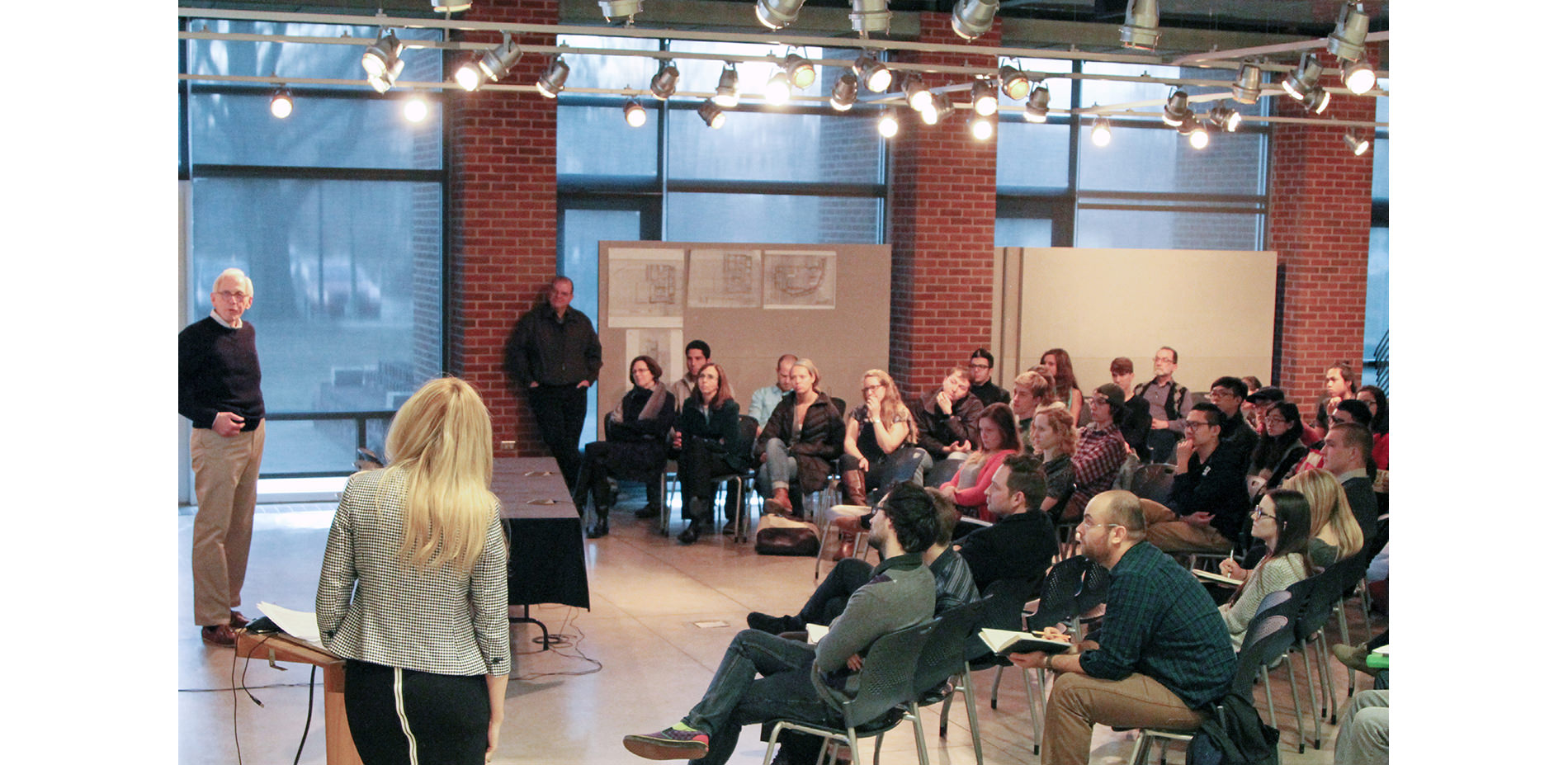
Photograph of roundtable colloquium as part of the exhibition with visiting archivist and guests from the general public and university at large with a discussion on scholarly contributions of Kiley’s work as it relates to the timelessness of landscape architecture.
Photo Credit: Scott Tucker
Media: Please submit high-resolution image requests to images@asla.org.
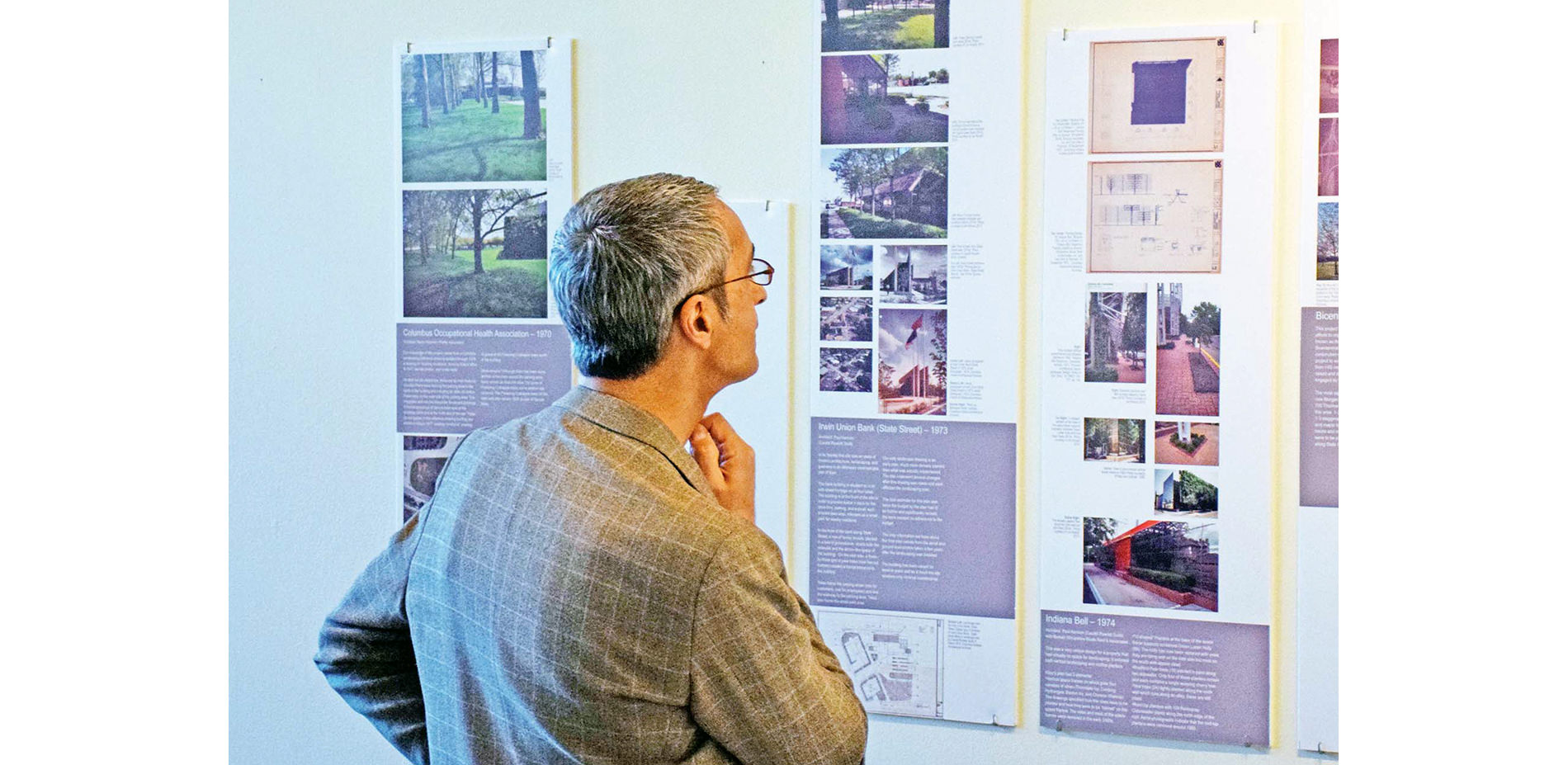
Photograph of visitor viewing project panels from inside the Robert G. Rouse III Gallery of the Dan Kiley Exhibit aft er installation.
Photo Credit: Wilson Lee
Media: Please submit high-resolution image requests to images@asla.org.
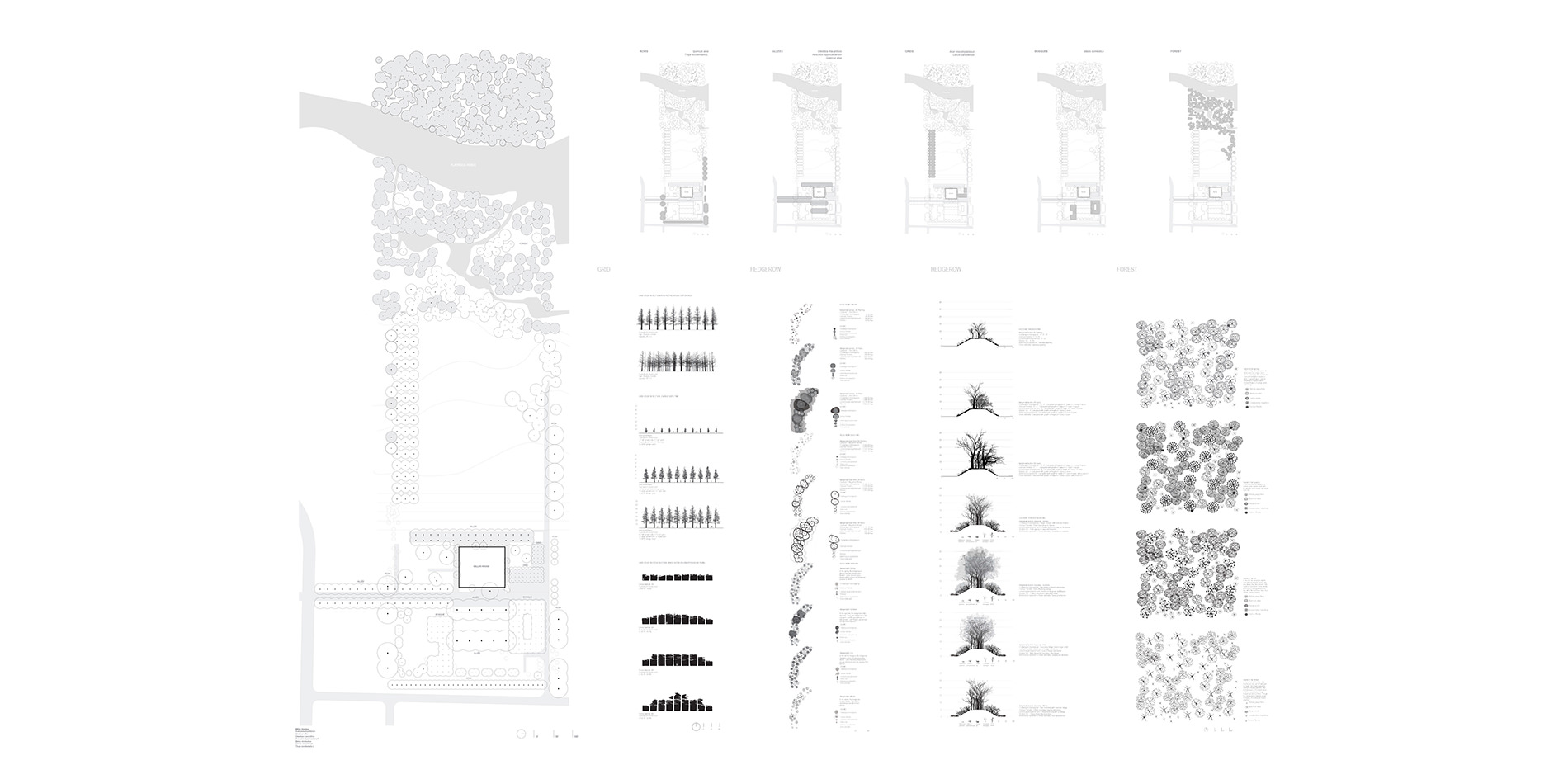
Seasonality and color study panel of the planting typologies in plan at the Miller House and Garden. Th e Plan diagrams were created using AutoCAD and Illustrator and are original student-drawings from research and analysis of Dan Kiley archives.
Photo Credit: Student Illustration
Media: Please submit high-resolution image requests to images@asla.org.
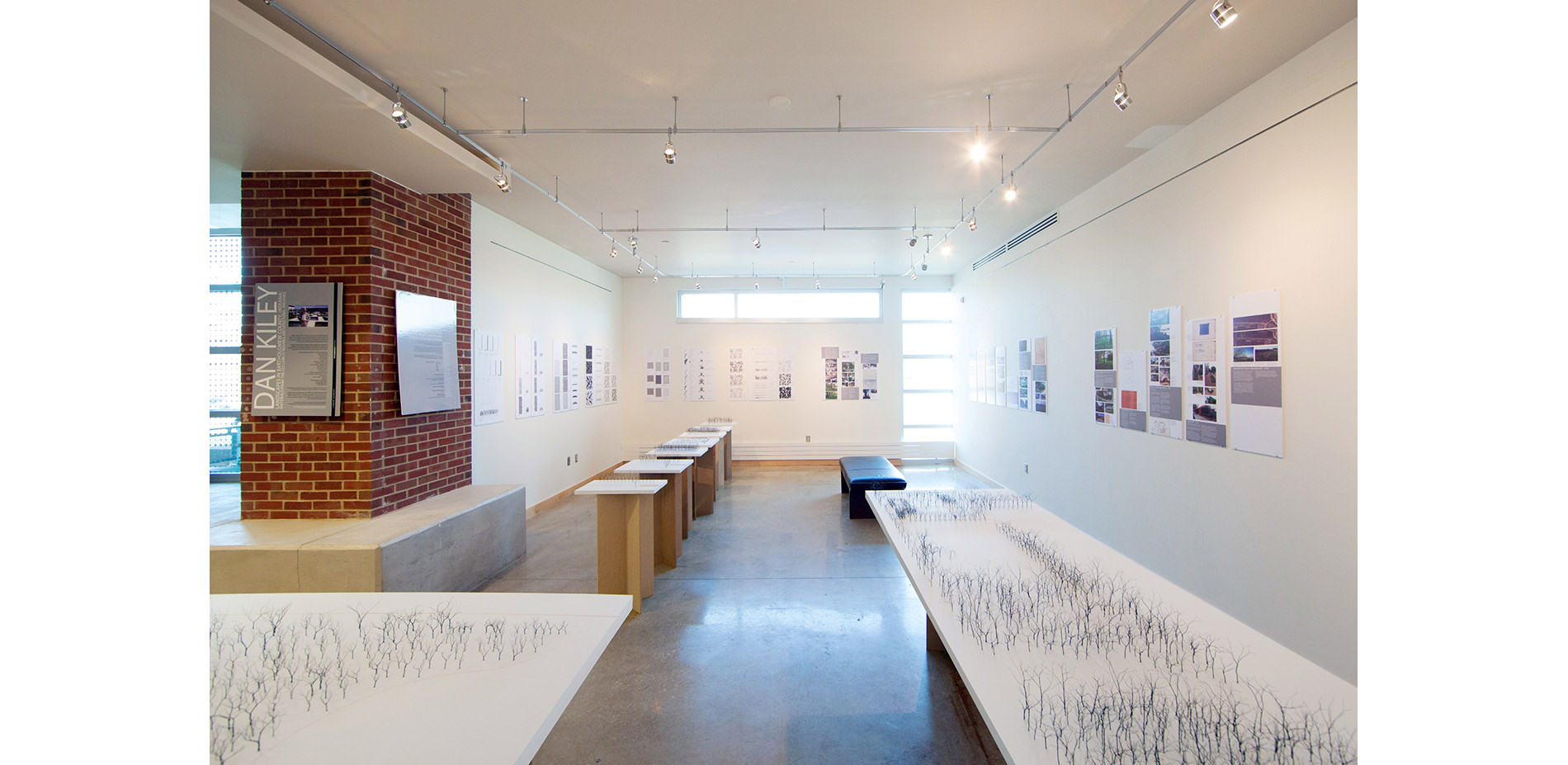
Gallery exhibition photograph depicting over 20 Kiley projects and augmented by planting typology studies with over 32 plan, section and perspective analyses conducted through graphic representation and physical modeling techniques.
Photo Credit: Cody Goddard
Media: Please submit high-resolution image requests to images@asla.org.
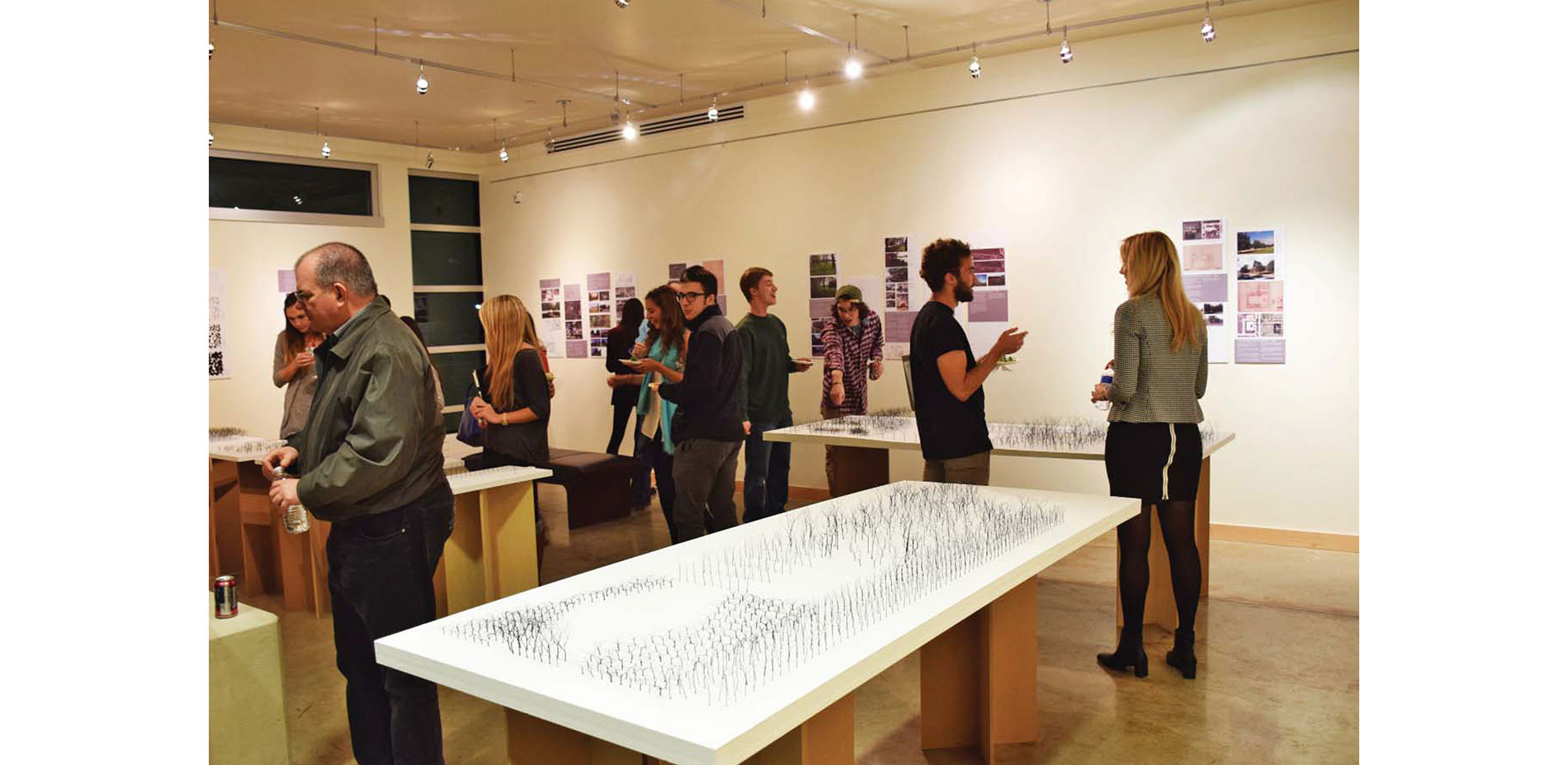
Gallery exhibition opening reception photograph showing two large-scale model replicas of Dan Kiley projects for which over 1,500 hand twisted individual trees were created for communication planted form and spatial complexity at the North Christian Church and the Miller Garden.
Photo Credit: Scott Tucker
Media: Please submit high-resolution image requests to images@asla.org.
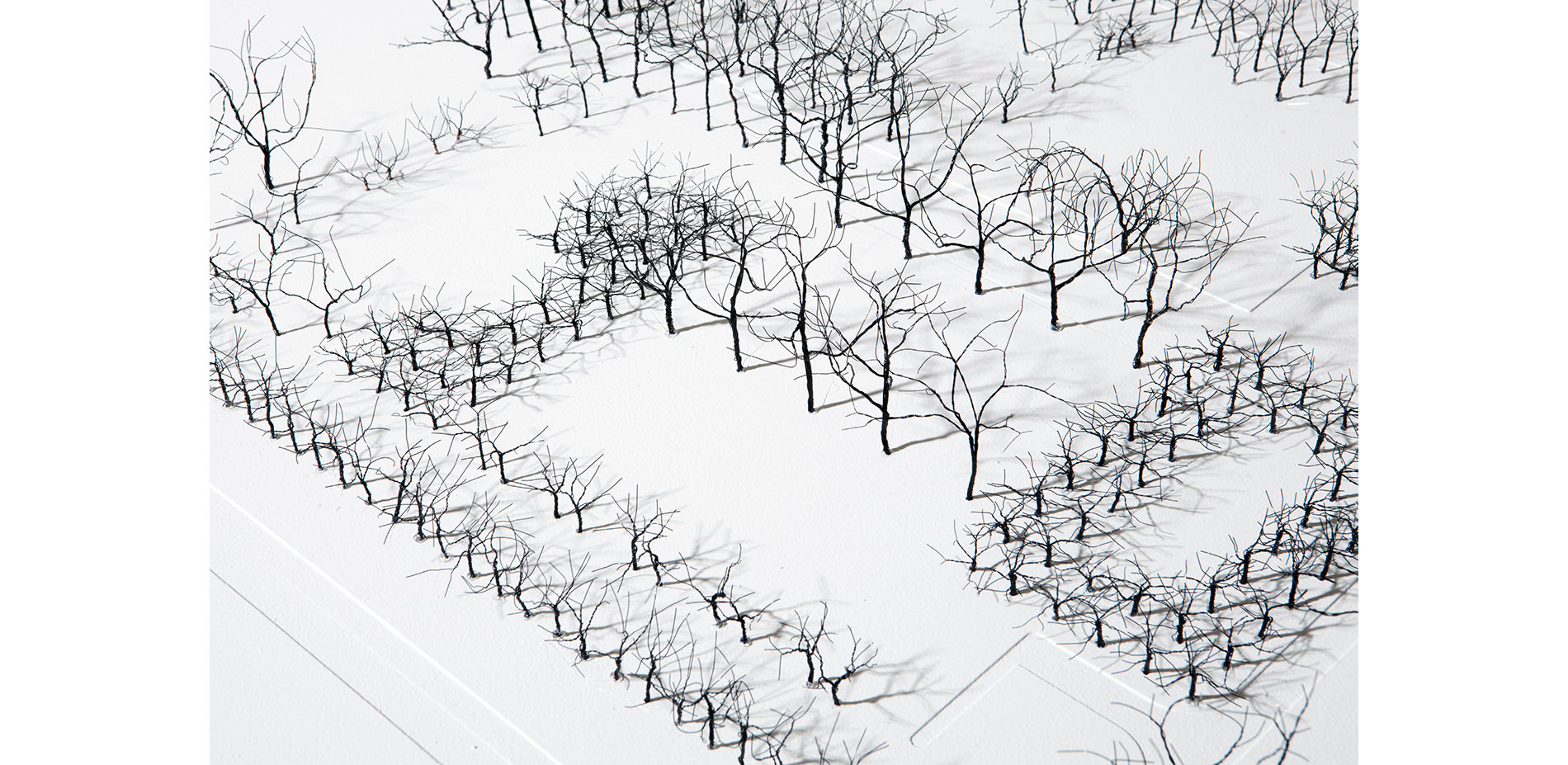
Blow up photograph illustrating specific planting typologies found within the Miller Garden created by students that through careful analysis and fabrication of Kiley’s work to bring the plan drawing to life experientially through the physical model in a new way.
Photo Credit: Scott Tucker
Media: Please submit high-resolution image requests to images@asla.org.
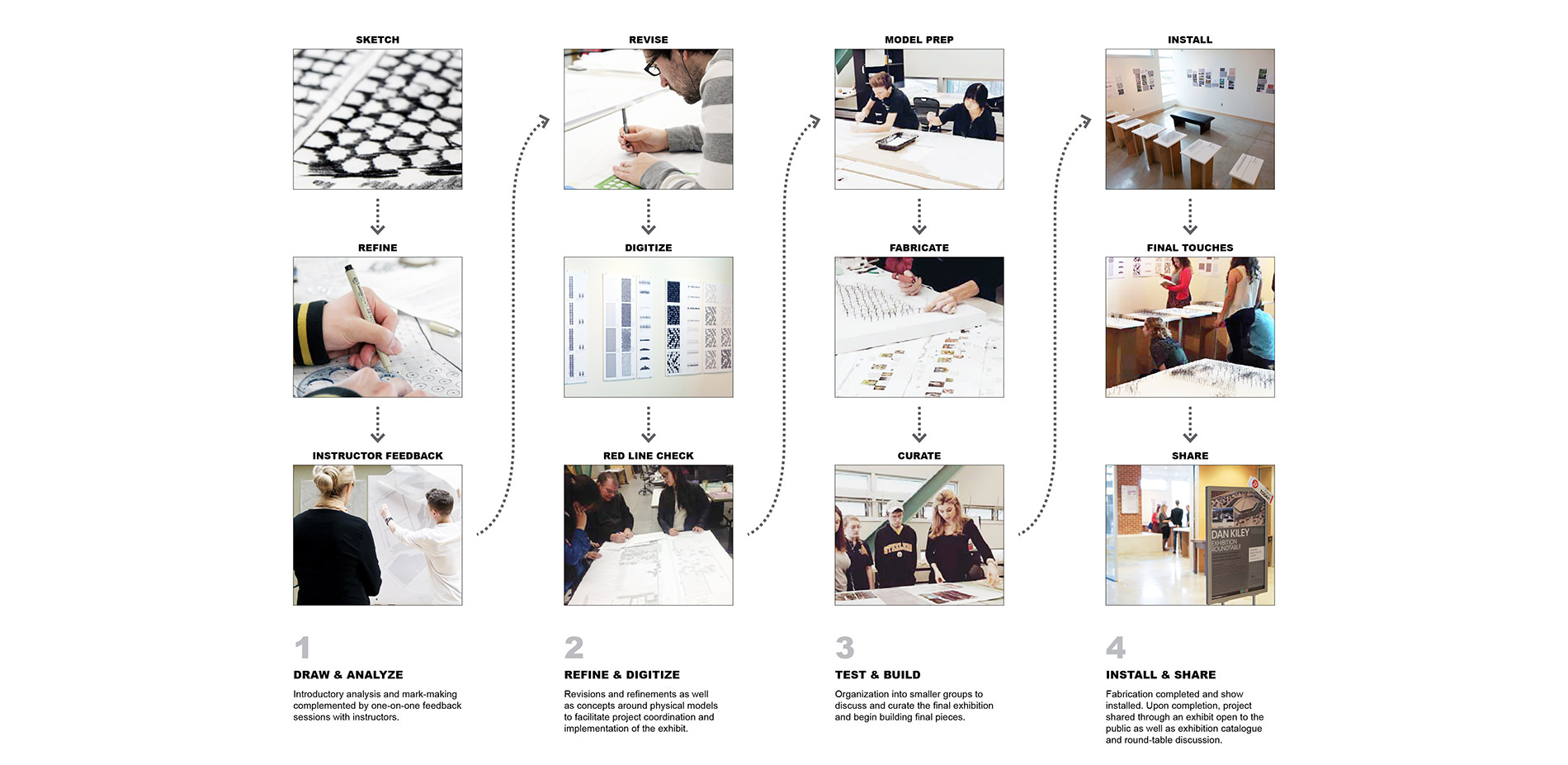
Process chart illustrating how the exhibition came together as a project highlighting key moments of design, instructor feedback, refi nement and making for the fi nal installment of the exhibition, opening reception, colloquium and sharing.
Photo Credit: Stephanie Swindle, Cody Goddard, Xinxin Li Scott Tucker
Media: Please submit high-resolution image requests to images@asla.org.
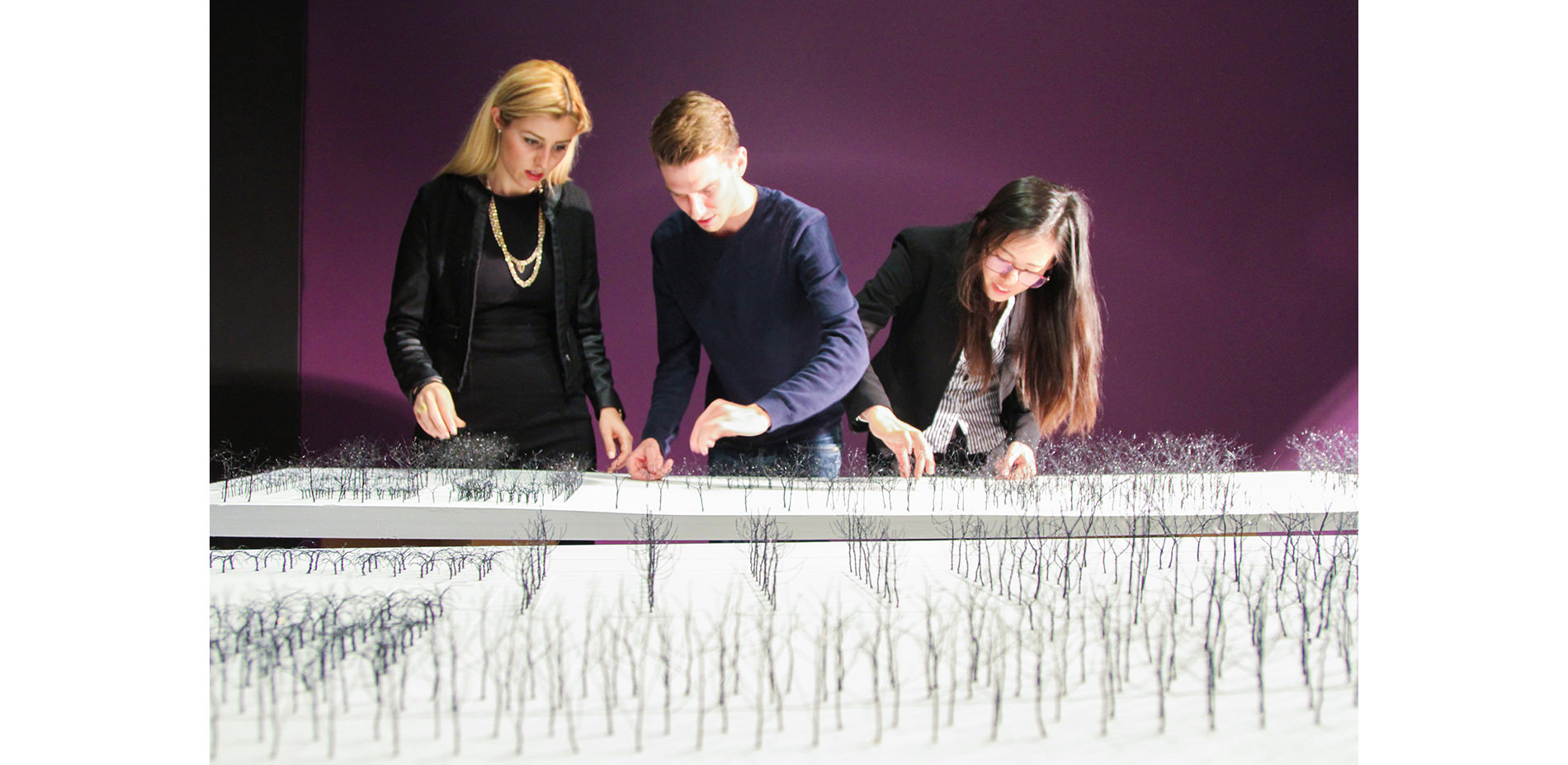
3’ x 8’ 3d CNC landscape model replicas made from AutoCAD digital plans translated from blueprints revealing 3d tree forms and topography and populated by wire trees of diff erent species such as Quercus alba, Gleditsia triacanthos, and Aesculus hippocastanum.
Photo Credit: Stephanie Swindle
Media: Please submit high-resolution image requests to images@asla.org.
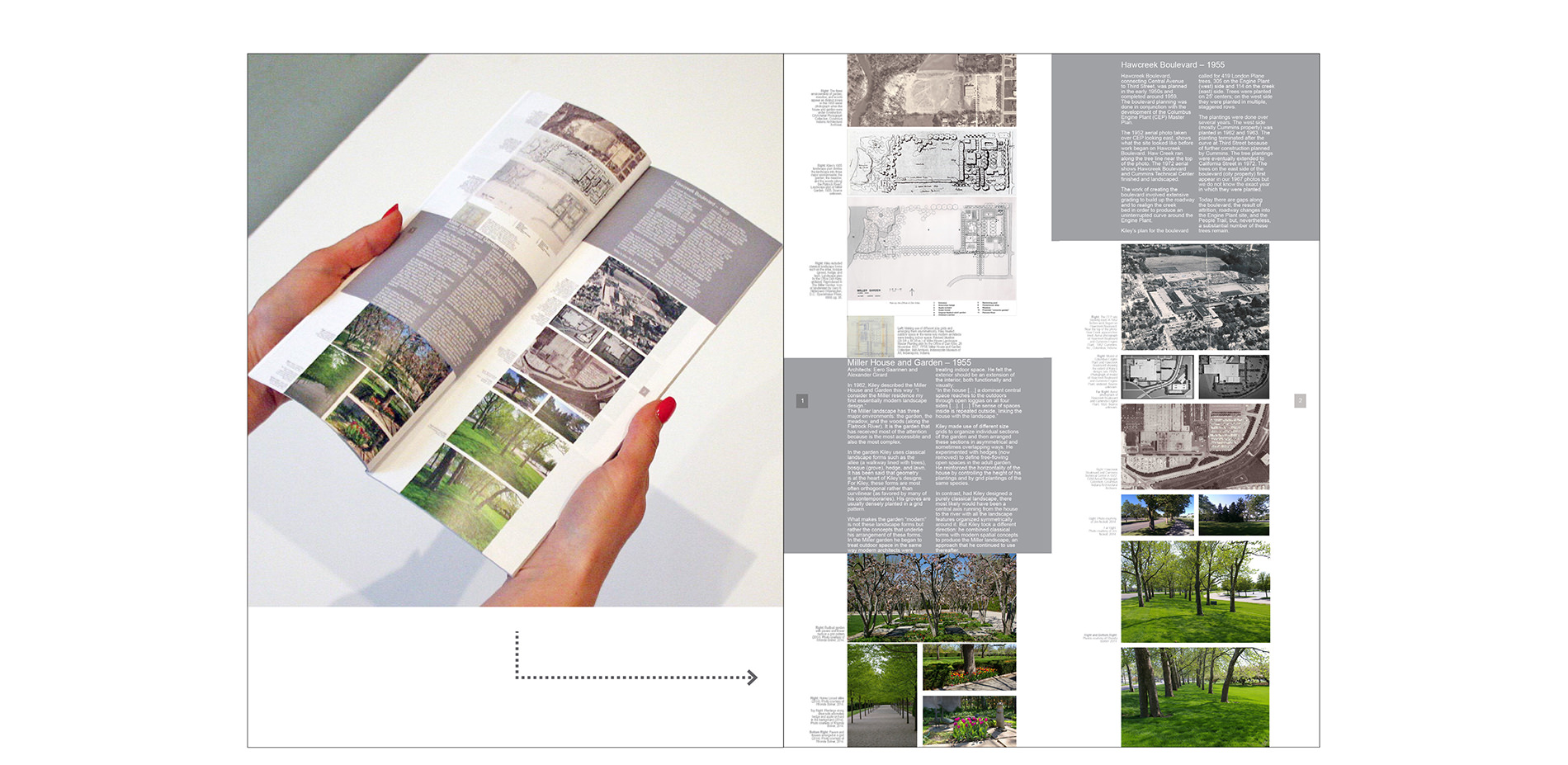
Sample page of the exhibition catalogue in color that accompanied the exhibit including 21 of Dan Kiley’s projects curated for only the second time in history from in and around Columbus, Indiana and augmented by planting typology studies.
Photo Credit: Christopher Counts
Media: Please submit high-resolution image requests to images@asla.org.
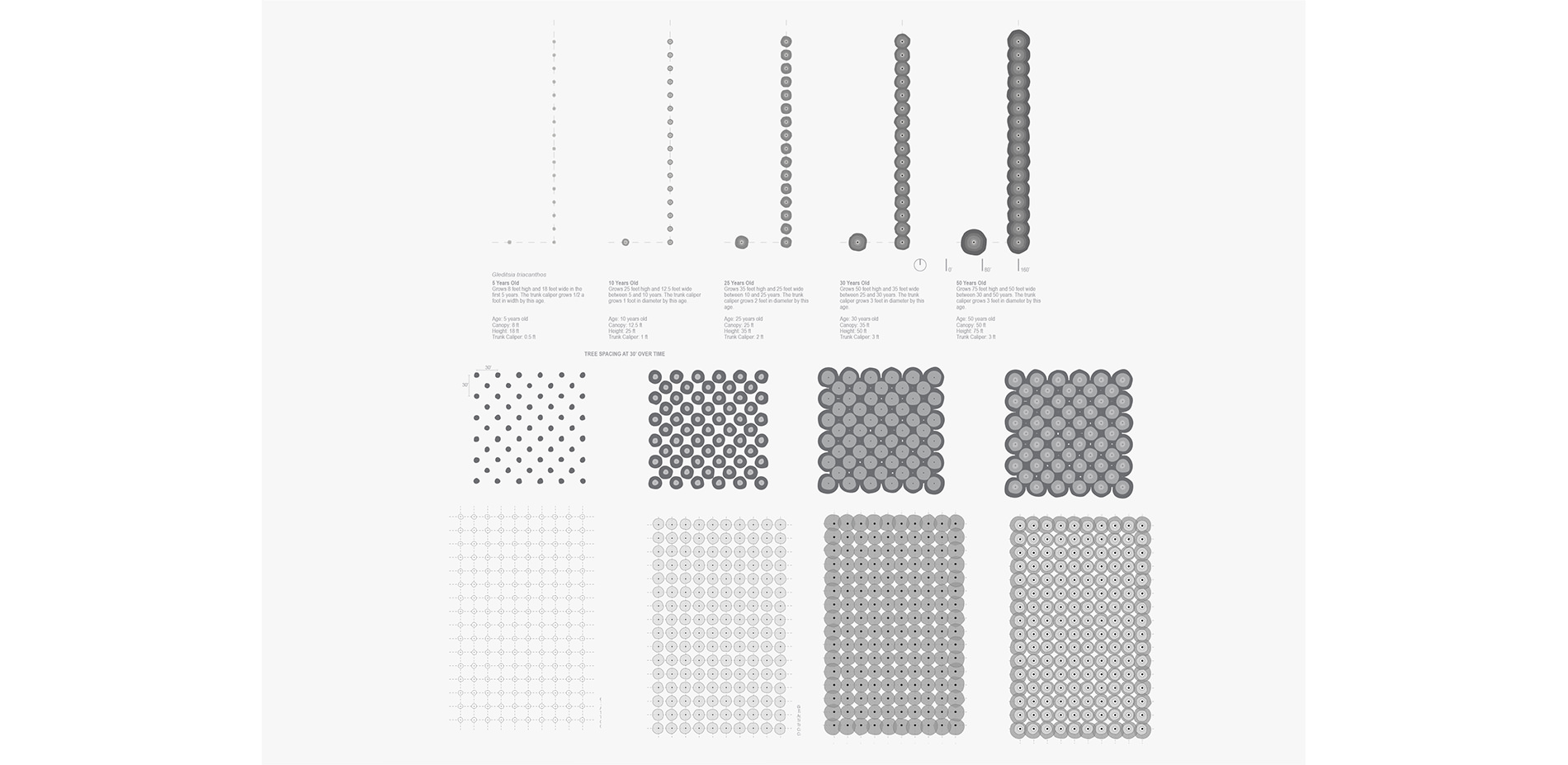
Analytical diagrams board using species taken from Dan Kiley’s work representing findings from explorations of planting over time.
Photo Credit: Student Illustration
Media: Please submit high-resolution image requests to images@asla.org.
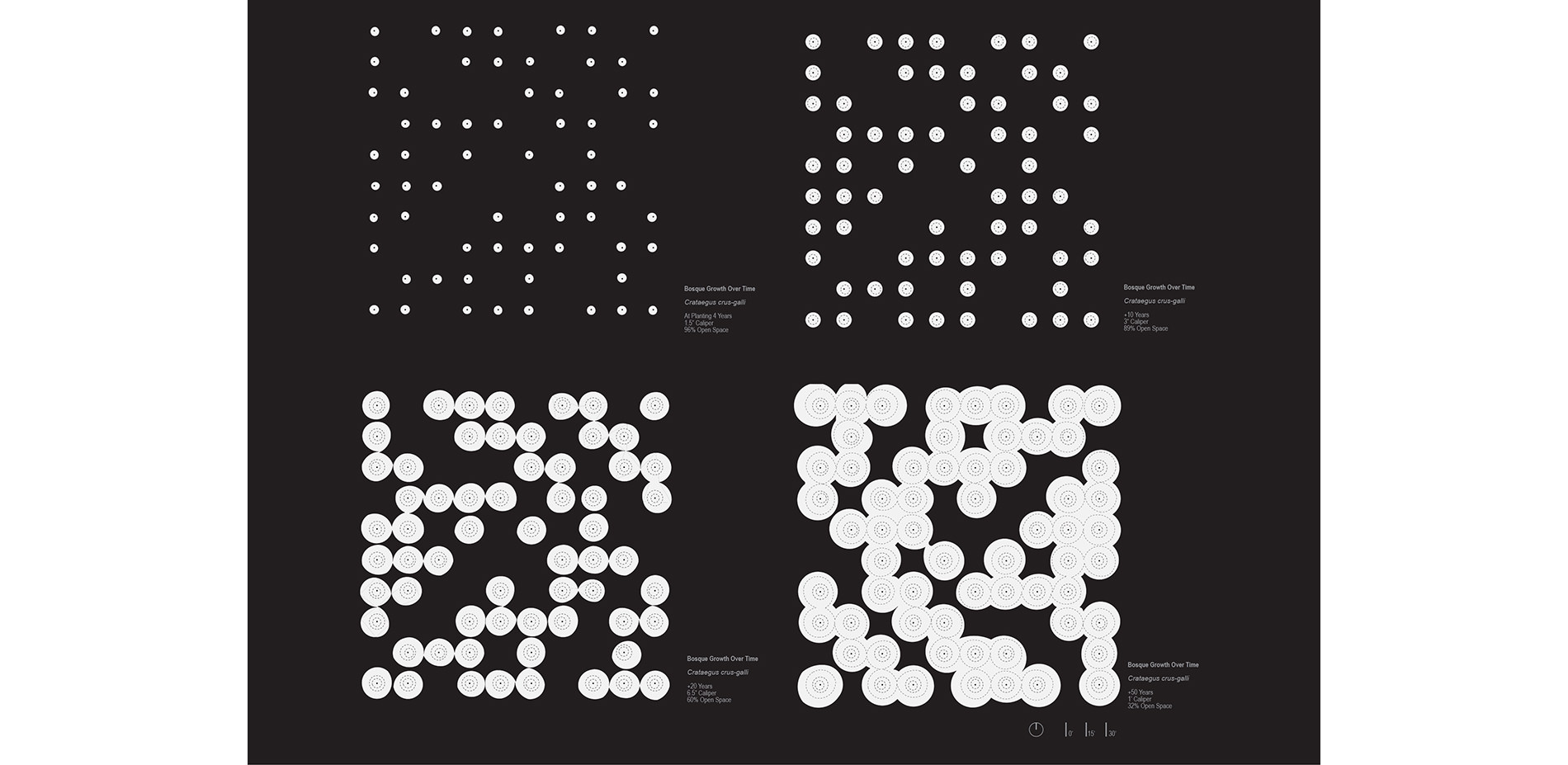
Analytical diagram series drawing of the typology of ‘bosque’ that explores negative space and occupiable spatial configurations as space left-over from tree canopy and trunks.
Photo Credit: Student Illustration
Media: Please submit high-resolution image requests to images@asla.org.
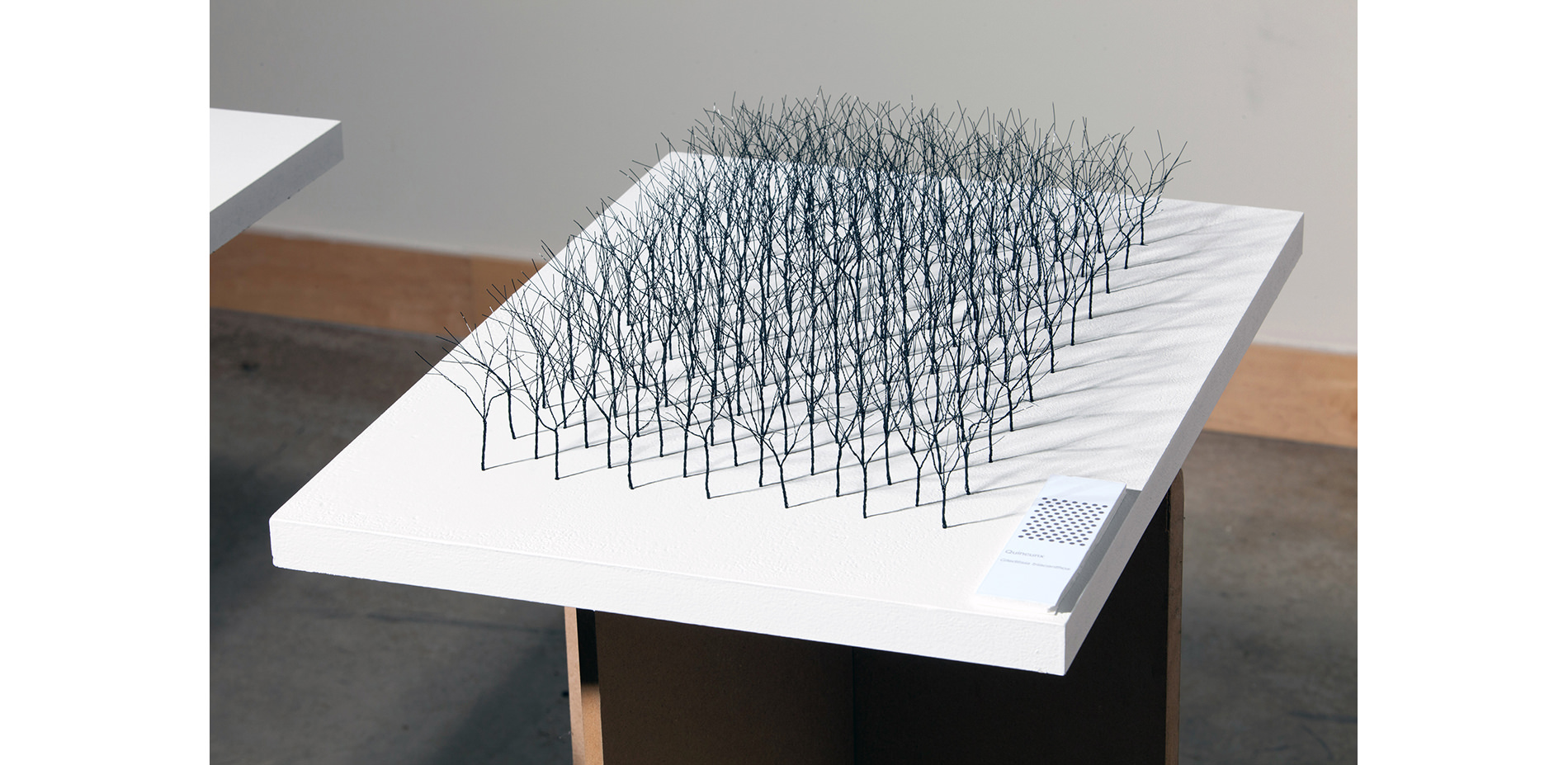
Photograph of one of the five scaled topology models at 1” = 30’ - 0”. Th is one highlights the typology of ‘quincunx’ through Gleditsia triacanthos with portraying physical form, spacing and arrangement.
Photo Credit: Cody Goddard
Media: Please submit high-resolution image requests to images@asla.org.
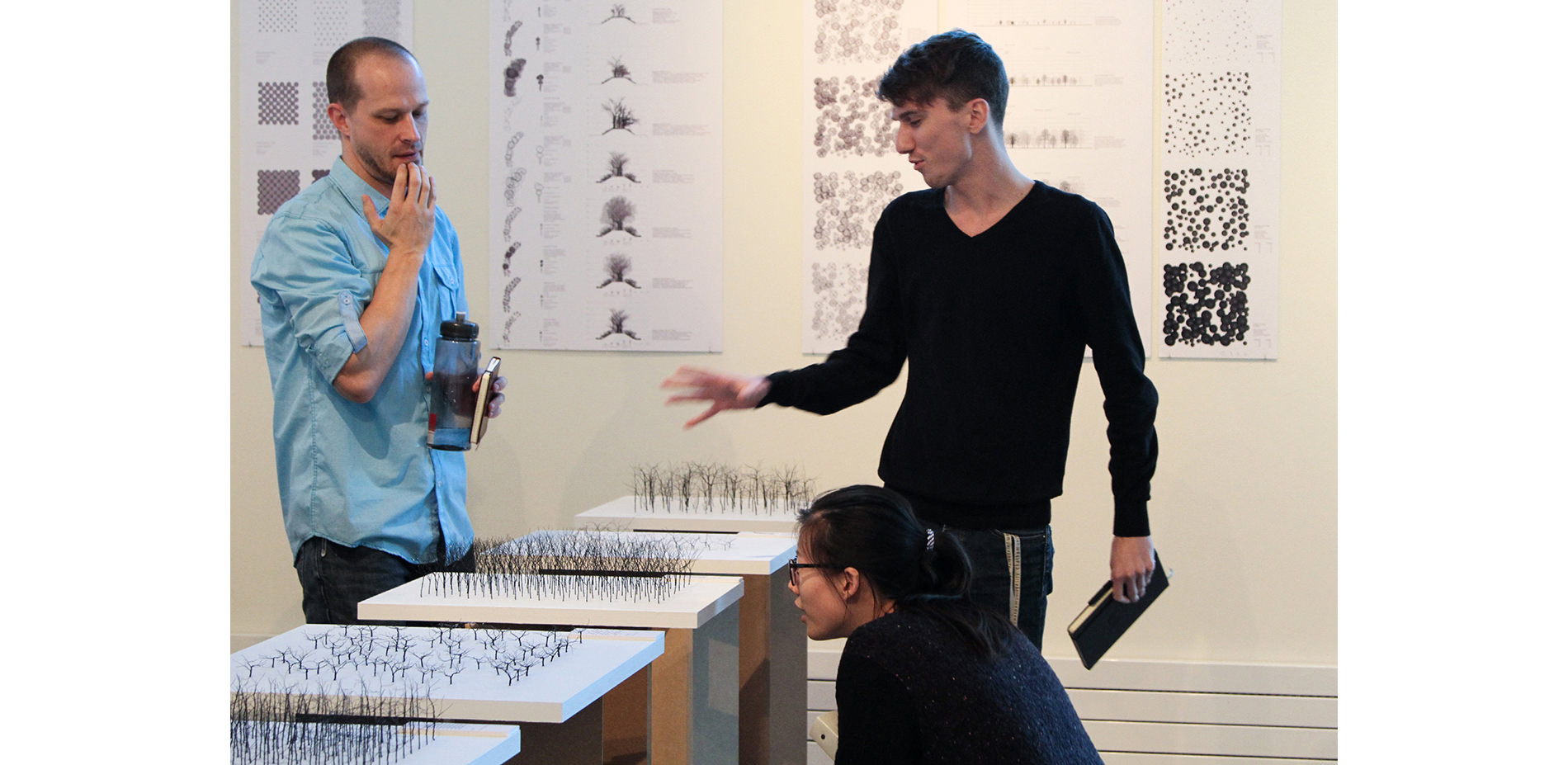
Planting typology studies in the exhibition exploring phenological and morphological nuances within tree species through canopy growth, seasonality, texture, growth in caliper, structure, form among other topics with spatial planting typology models and drawings.
Photo Credit: Scott Tucker
Media: Please submit high-resolution image requests to images@asla.org.


















